
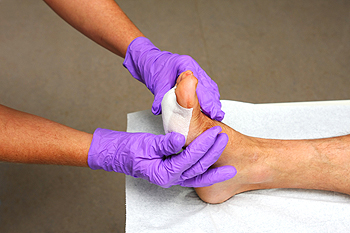 Corns are formed by a buildup of hard and dead skin that usually forms around the toe joints. The most common cause of corns is poorly fitting shoes, but activities like running and climbing can lead to corns as well. They normally form in a cone-like shape and work as the foot’s method of protection from friction. Ultimately this extra skin can cause uncomfortable pressure on the feet. Corns are very common and are also treatable. The most common solutions are to wear properly fitting shoes and to take pressure off of the corn as often as possible. If you continue to experience issues with corns, or you have preexisting conditions like diabetes, poor blood flow, or fragile skin, please consult with a podiatrist.
Corns are formed by a buildup of hard and dead skin that usually forms around the toe joints. The most common cause of corns is poorly fitting shoes, but activities like running and climbing can lead to corns as well. They normally form in a cone-like shape and work as the foot’s method of protection from friction. Ultimately this extra skin can cause uncomfortable pressure on the feet. Corns are very common and are also treatable. The most common solutions are to wear properly fitting shoes and to take pressure off of the corn as often as possible. If you continue to experience issues with corns, or you have preexisting conditions like diabetes, poor blood flow, or fragile skin, please consult with a podiatrist.
Corns can make walking very painful and should be treated immediately. If you have questions regarding your feet and ankles, contact Dr. Stephan J. LaPointe of Georgia Foot & Ankle Specialists . Our doctor will treat your foot and ankle needs.
Corns: What Are They? And How Do You Get Rid of Them?
Corns are thickened areas on the skin that can become painful. They are caused by excessive pressure and friction on the skin. Corns press into the deeper layers of the skin and are usually round in shape.
Ways to Prevent Corns
There are many ways to get rid of painful corns such as:
Treating Corns
Although most corns slowly disappear when the friction or pressure stops, this isn’t always the case. Consult with your podiatrist to determine the best treatment option for your case of corns.
If you have any questions please feel free to contact our office located in Rome, GA . We offer the newest diagnostic and treatment technologies for all your foot and ankle needs.
Patients who have endured a stress fracture in the foot may run or walk through the pain and discomfort that is often associated with this type of injury. It develops gradually from overuse, and is considered to be a hairline fracture. Common symptoms that patients experience can consist of swelling, and in severe cases, the inability to walk. It is beneficial to cease the activity that caused the injury, and it may help to wear a protective boot as the healing process takes place. Research has indicated healing may be accelerated when specific stretches and exercises of the affected foot are performed. If you have a stress fracture in your foot, it is strongly advised that you confer with a podiatrist who can help you with proper healing techniques.
Activities where too much pressure is put on the feet can cause stress fractures. To learn more, contact Dr. Stephan J. LaPointe from Georgia Foot & Ankle Specialists . Our doctor can provide the care you need to keep your pain free and on your feet.
Dealing with Stress Fractures of the Foot and Ankle
Stress fractures occur in the foot and ankle when muscles in these areas weaken from too much or too little use. The feet and ankles then lose support when walking or running from the impact of the ground. Since there is no protection, the bones receive the full impact of each step. Stress on the feet can cause cracks to form in the bones, thus creating stress fractures.
What Are Stress Fractures?
Stress fractures occur frequently in individuals whose daily activities cause great impact on the feet and ankles. Stress factors are most common among:
Symptoms
Pain from the fractures occur in the area of the fractures and can be constant or intermittent. It will often cause sharp or dull pain with swelling and tenderness. Engaging in any kind of activity which involves high impact will aggravate pain.
If you have any questions please feel free to contact our office located in Rome, GA . We offer the newest diagnostic and treatment technologies for all your foot and ankle needs.
Read more about Dealing with Stress Fractures of the Foot and Ankle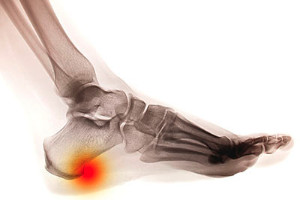 Patients who experience heel pain may be aware that this can be indicative of a heel spur. This is defined as a small piece of bone that grows on the inside of the heel and is often confused with plantar fasciitis. It can develop from a strained plantar fascia, which may be a result of wearing shoes that do not fit correctly. Common symptoms that often accompany heel spurs include pain and discomfort in the heel and surrounding areas, and it is often difficult to perform daily activities. Patients may find comfort in practicing specific foot stretches that can help to relax the tissues near the heel, and relief may be found when the affected foot is rested and elevated. It is strongly advised that you consult with a podiatrist who can determine the cause of existing heel pain, and offer correct treatment options for heel spurs.
Patients who experience heel pain may be aware that this can be indicative of a heel spur. This is defined as a small piece of bone that grows on the inside of the heel and is often confused with plantar fasciitis. It can develop from a strained plantar fascia, which may be a result of wearing shoes that do not fit correctly. Common symptoms that often accompany heel spurs include pain and discomfort in the heel and surrounding areas, and it is often difficult to perform daily activities. Patients may find comfort in practicing specific foot stretches that can help to relax the tissues near the heel, and relief may be found when the affected foot is rested and elevated. It is strongly advised that you consult with a podiatrist who can determine the cause of existing heel pain, and offer correct treatment options for heel spurs.
Heel spurs can be incredibly painful and sometimes may make you unable to participate in physical activities. To get medical care for your heel spurs, contact Dr. Stephan J. LaPointe from Georgia Foot & Ankle Specialists . Our doctor will do everything possible to treat your condition.
Heels Spurs
Heel spurs are formed by calcium deposits on the back of the foot where the heel is. This can also be caused by small fragments of bone breaking off one section of the foot, attaching onto the back of the foot. Heel spurs can also be bone growth on the back of the foot and may grow in the direction of the arch of the foot.
Older individuals usually suffer from heel spurs and pain sometimes intensifies with age. One of the main condition's spurs are related to is plantar fasciitis.
Pain
The pain associated with spurs is often because of weight placed on the feet. When someone is walking, their entire weight is concentrated on the feet. Bone spurs then have the tendency to affect other bones and tissues around the foot. As the pain continues, the feet will become tender and sensitive over time.
Treatments
There are many ways to treat heel spurs. If one is suffering from heel spurs in conjunction with pain, there are several methods for healing. Medication, surgery, and herbal care are some options.
If you have any questions feel free to contact our office located in Rome, GA . We offer the latest in diagnostic and treatment technology to meet your needs.
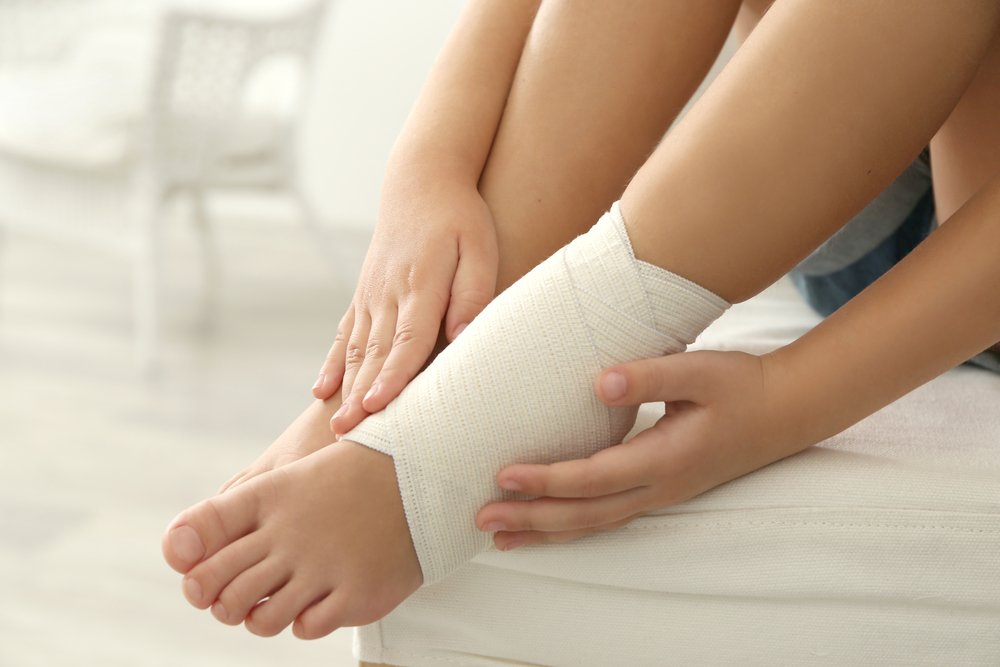 Ligaments that are injured on the outside of the ankle are generally the cause of an ankle sprain. This type of injury can cause limited range of motion, and it can become difficult to accomplish daily activities. There are several levels of ankle sprains. Mild sprains can produce slight swelling surrounding the ankle bone, and it is likely there is little joint instability. If moderate pain is felt, it may be accompanied by stiffness and bruising, in addition to weakened joints. Severe pain is felt in what is referred to as a grade three sprain, and it can indicate a total ligament rupture. If you have sprained your ankle, it is strongly advised that you consult with a podiatrist who can determine the severity of the injury, and begin the correct treatment for you.
Ligaments that are injured on the outside of the ankle are generally the cause of an ankle sprain. This type of injury can cause limited range of motion, and it can become difficult to accomplish daily activities. There are several levels of ankle sprains. Mild sprains can produce slight swelling surrounding the ankle bone, and it is likely there is little joint instability. If moderate pain is felt, it may be accompanied by stiffness and bruising, in addition to weakened joints. Severe pain is felt in what is referred to as a grade three sprain, and it can indicate a total ligament rupture. If you have sprained your ankle, it is strongly advised that you consult with a podiatrist who can determine the severity of the injury, and begin the correct treatment for you.
Although ankle sprains are common, they aren’t always minor injuries. If you need your ankle injury looked at, contact Dr. Stephan J. LaPointe from Georgia Foot & Ankle Specialists . Our doctor can provide the care you need to keep you pain-free and on your feet.
How Does an Ankle Sprain Occur?
Ankle sprains are the result of a tear in the ligaments within the ankle. These injuries may happen when you make a rapid shifting movement while your foot is planted. A less common way to sprain your ankle is when your ankle rolls inward while your foot turns outward.
What Are the Symptoms?
Preventing a Sprain
Treatment of a Sprain
In many cases, the RICE method (Rest, Ice, Compression, and Elevate) is used to treat ankle sprains. However, you should see a podiatrist to see which treatment option would work best with your injury. In severe cases, surgery may be required.
It is important to ask your doctor about rehab options after you receive treatment for your injury. Stretching, strength training, and balance exercises may help the ankle heal while also preventing further injury.
If you have any questions, please feel free to contact our office located in Rome, GA . We offer the newest diagnostic and treatment technologies for all your foot care needs.
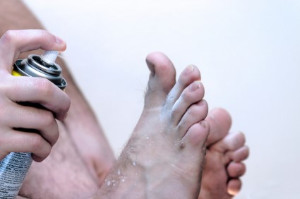 Athlete’s foot is a contagious fungal skin infection. This fungal infection typically thrives in moist, warm environments. Not wearing the proper footwear in locations such as gyms, locker rooms, public swimming pools, and communal showers may increase your risk of getting this fungal infection. There are certain symptoms that are commonly associated with this condition. These may include itchy blisters on the feet, dry skin on the soles or sides of the feet, a stinging or burning sensation between the toes, and cracking or peeling of the skin between the toes. Some patients have found antifungal powder to be helpful in trying to relieve these symptoms. For a proper diagnosis and advised plan of treatment, it’s suggested that you consult with a podiatrist.
Athlete’s foot is a contagious fungal skin infection. This fungal infection typically thrives in moist, warm environments. Not wearing the proper footwear in locations such as gyms, locker rooms, public swimming pools, and communal showers may increase your risk of getting this fungal infection. There are certain symptoms that are commonly associated with this condition. These may include itchy blisters on the feet, dry skin on the soles or sides of the feet, a stinging or burning sensation between the toes, and cracking or peeling of the skin between the toes. Some patients have found antifungal powder to be helpful in trying to relieve these symptoms. For a proper diagnosis and advised plan of treatment, it’s suggested that you consult with a podiatrist.
Athlete’s foot is an inconvenient condition that can be easily reduced with the proper treatment. If you have any concerns about your feet and ankles, contact Dr. Stephan J. LaPointe from Georgia Foot & Ankle Specialists . Our doctor will treat your foot and ankle needs.
Athlete’s Foot: The Sole Story
Athlete's foot, also known as tinea pedis, can be an extremely contagious foot infection. It is commonly contracted in public changing areas and bathrooms, dormitory style living quarters, around locker rooms and public swimming pools, or anywhere your feet often come into contact with other people.
Solutions to Combat Athlete’s Foot
Athlete’s foot can cause many irritating symptoms such as dry and flaking skin, itching, and redness. Some more severe symptoms can include bleeding and cracked skin, intense itching and burning, and even pain when walking. In the worst cases, Athlete’s foot can cause blistering as well. Speak to your podiatrist for a better understanding of the different causes of Athlete’s foot, as well as help in determining which treatment options are best for you.
If you have any questions please feel free to contact our office located in Rome, GA . We offer the newest diagnostic and treatment technologies for all your foot and ankle needs.
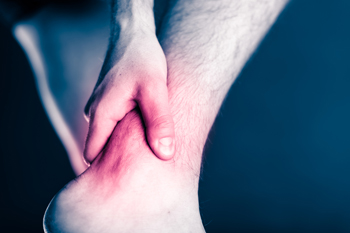 Many runners experience the frustration of dealing with a sports injury that impacts their lower extremities. Whether you’re dealing with plantar fasciitis, a stress fracture, or Achilles tendonitis, it is common for an athlete dealing with a sports injury to want to continue staying in shape and being active. There are a few exercises that can help mimic the activity of running on a more low impact level. One example of this type of exercise is referred to as pool running, or aqua jogging. This activity holds the same concept as if you were on land, except you are under water. While it is low-impact, which is good if you’re dealing with an injury, it is still a high-resistance exercise. Stair walking is another low impact exercise that can help build strength as your body continues to heal. Of course it’s important to listen to your body and monitor any pain felt. For tips on how to stay active while nursing a sports injury, it’s suggested that you speak with a podiatrist.
Many runners experience the frustration of dealing with a sports injury that impacts their lower extremities. Whether you’re dealing with plantar fasciitis, a stress fracture, or Achilles tendonitis, it is common for an athlete dealing with a sports injury to want to continue staying in shape and being active. There are a few exercises that can help mimic the activity of running on a more low impact level. One example of this type of exercise is referred to as pool running, or aqua jogging. This activity holds the same concept as if you were on land, except you are under water. While it is low-impact, which is good if you’re dealing with an injury, it is still a high-resistance exercise. Stair walking is another low impact exercise that can help build strength as your body continues to heal. Of course it’s important to listen to your body and monitor any pain felt. For tips on how to stay active while nursing a sports injury, it’s suggested that you speak with a podiatrist.
Ankle and foot injuries are common among athletes and in many sports. They can be caused by several problems and may be potentially serious. If you are feeling pain or think you were injured in a sporting event or when exercising, consult with Dr. Stephan J. LaPointe from Georgia Foot & Ankle Specialists . Our doctor will assess your condition and provide you with quality foot and ankle treatment.
Common Injuries
The most common injuries that occur in sporting activities include:
Symptoms
Symptoms vary depending upon the injury and in some cases, there may be no symptoms at all. However, in most cases, some form of symptom is experienced. Pain, aching, burning, bruising, tenderness, tightness or stiffness, sensation loss, difficulty moving, and swelling are the most common symptoms.
Treatment
Just as symptoms vary depending upon the injury, so do treatment options. A common treatment method is known as the RICE method. This method involves rest, applying ice, compression and elevating the afflicted foot or ankle. If the injury appears to be more serious, surgery might be required, such as arthroscopic or reconstructive surgery. Lastly, rehabilitation or therapy might be needed to gain full functionality in the afflicted area. Any discomfort experienced by an athlete must be evaluated by a licensed, reputable medical professional.
If you have any questions, please feel free to contact our office located in Rome, GA . We offer the newest diagnostic and treatment technologies for all your foot care needs.
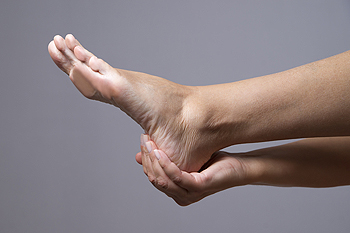 There is a specific nerve that is known as the tibial nerve which is located inside the tarsal tunnel. It is found inside the ankle, and is surrounded by bone and tissue. If inflammation of this nerve occurs as a result of an injury, it is referred to as tarsal tunnel syndrome. Some of the symptoms that patients may experience can range from a burning or numbing sensation, to sharp, shooting pains. Existing medical conditions that may contribute to tarsal tunnel syndrome may include arthritis, flat feet, and diabetes. Additionally, it may develop as a result of an ankle sprain or fracture, which can initiate swelling to the tibial nerve. If you have symptoms of this nature, please consult with a podiatrist who can properly diagnose and manage this condition as quickly as possible.
There is a specific nerve that is known as the tibial nerve which is located inside the tarsal tunnel. It is found inside the ankle, and is surrounded by bone and tissue. If inflammation of this nerve occurs as a result of an injury, it is referred to as tarsal tunnel syndrome. Some of the symptoms that patients may experience can range from a burning or numbing sensation, to sharp, shooting pains. Existing medical conditions that may contribute to tarsal tunnel syndrome may include arthritis, flat feet, and diabetes. Additionally, it may develop as a result of an ankle sprain or fracture, which can initiate swelling to the tibial nerve. If you have symptoms of this nature, please consult with a podiatrist who can properly diagnose and manage this condition as quickly as possible.
Tarsal tunnel syndrome can be very uncomfortable to live with. If you are experiencing tarsal tunnel syndrome, contact Dr. Stephan J. LaPointe of Georgia Foot & Ankle Specialists . Our doctor can provide the care you need to keep you pain-free and on your feet.
Tarsal Tunnel Syndrome
Tarsal tunnel syndrome, which can also be called tibial nerve dysfunction, is an uncommon condition of misfiring peripheral nerves in the foot. The tibial nerve is the peripheral nerve in the leg responsible for sensation and movement of the foot and calf muscles. In tarsal tunnel syndrome, the tibial nerve is damaged, causing problems with movement and feeling in the foot of the affected leg.
Common Cause of Tarsal Tunnel Syndrome
The Effects of Tarsal Tunnel Syndrome
A physical exam of the leg can help identify the presence of tarsal tunnel syndrome. Medical tests, such as a nerve biopsy, are also used to diagnose the condition. Patients may receive physical therapy and prescriptive medication. In extreme cases, some may require surgery.
If you have any questions please feel free to contact our office located in Rome, GA . We offer the newest diagnostic and treatment technologies for all your foot and ankle needs.
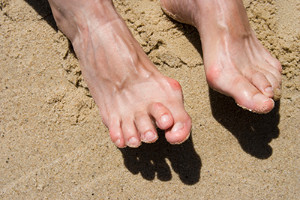 The foot condition that is referred to as hammertoe is considered to be a deformity. It can occur from genetic reasons, or from wearing shoes that do not have adequate room for the toes to move freely in. Additionally, it may cause the middle toes to bend at the joint, and may resemble a hammer. Calluses may form on top of the joints, and it may be difficult to wear shoes. Some patients may find mild relief when a small protective pad is worn on top of the toes. This may help to prevent friction between the shoe and the toe. In severe cases of hammertoe, surgery may be an option for permanent removal and relief. If you are afflicted with hammertoe, it is advised that you schedule a consultation with a podiatrist who can determine what the best treatment is for you.
The foot condition that is referred to as hammertoe is considered to be a deformity. It can occur from genetic reasons, or from wearing shoes that do not have adequate room for the toes to move freely in. Additionally, it may cause the middle toes to bend at the joint, and may resemble a hammer. Calluses may form on top of the joints, and it may be difficult to wear shoes. Some patients may find mild relief when a small protective pad is worn on top of the toes. This may help to prevent friction between the shoe and the toe. In severe cases of hammertoe, surgery may be an option for permanent removal and relief. If you are afflicted with hammertoe, it is advised that you schedule a consultation with a podiatrist who can determine what the best treatment is for you.
Hammertoe
Hammertoes can be a painful condition to live with. For more information, contact Dr. Stephan J. LaPointe from Georgia Foot & Ankle Specialists . Our doctor will answer any of your foot- and ankle-related questions.
Hammertoe is a foot deformity that affects the joints of the second, third, fourth, or fifth toes of your feet. It is a painful foot condition in which these toes curl and arch up, which can often lead to pain when wearing footwear.
Symptoms
Causes
Genetics – People who are genetically predisposed to hammertoe are often more susceptible
Arthritis – Because arthritis affects the joints in your toes, further deformities stemming from arthritis can occur
Trauma – Direct trauma to the toes could potentially lead to hammertoe
Ill-fitting shoes – Undue pressure on the front of the toes from ill-fitting shoes can potentially lead to the development of hammertoe
Treatment
Orthotics – Custom made inserts can be used to help relieve pressure placed on the toes and therefore relieve some of the pain associated with it
Medications – Oral medications such as anti-inflammatories or NSAIDs could be used to treat the pain and inflammation hammertoes causes. Injections of corticosteroids are also sometimes used
Surgery – In more severe cases where the hammertoes have become more rigid, foot surgery is a potential option
If you have any questions please contact our office located in Rome, GA . We offer the newest diagnostic and treatment technologies for all your foot and ankle needs.